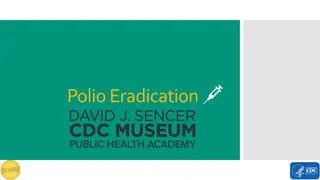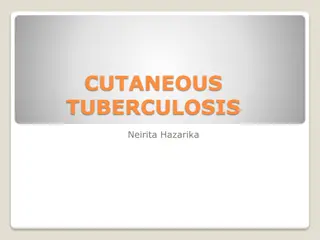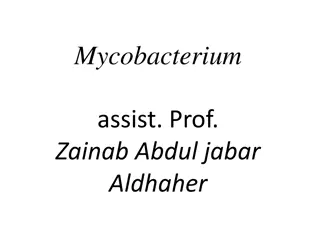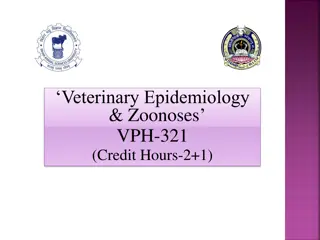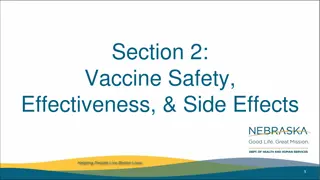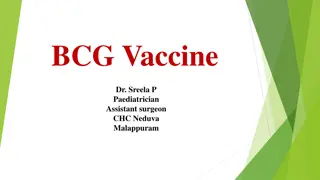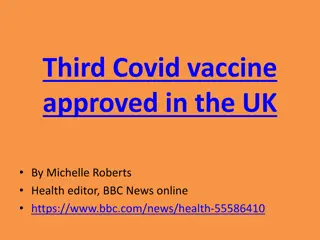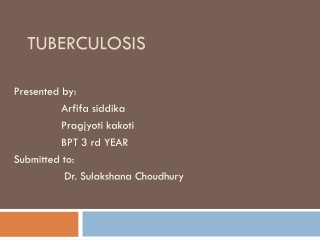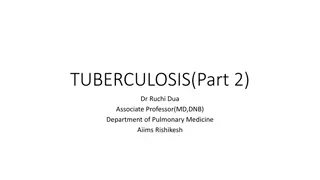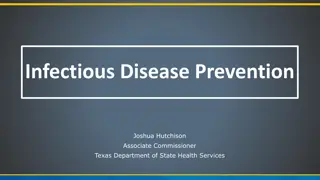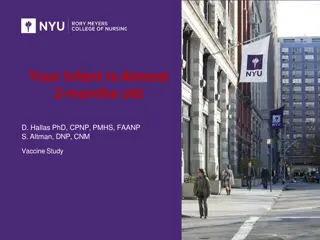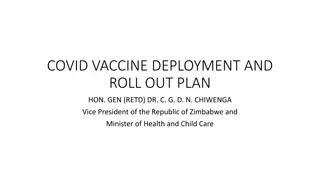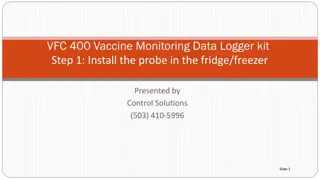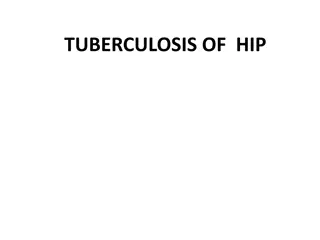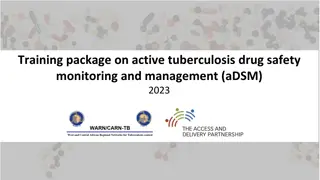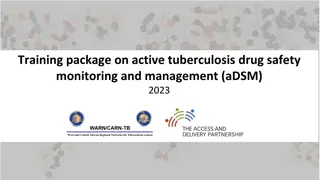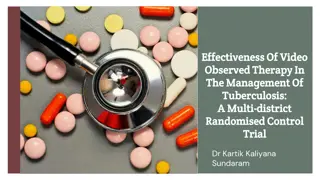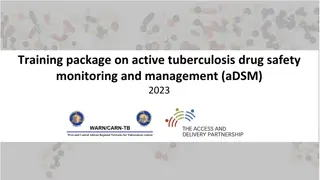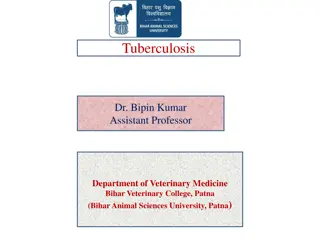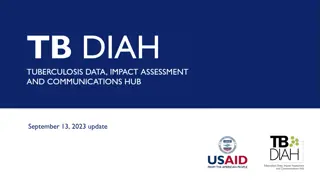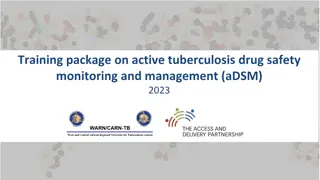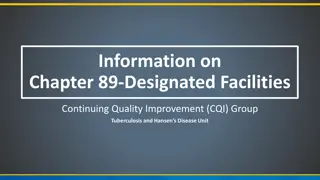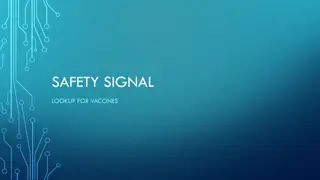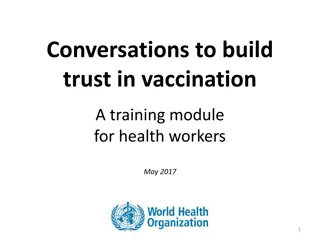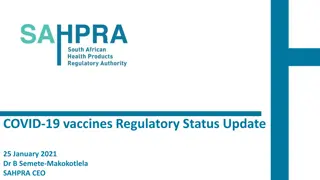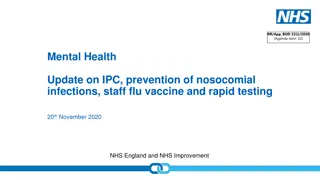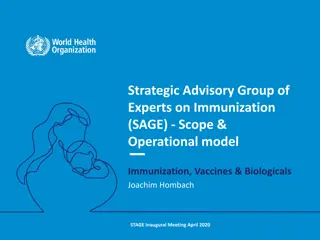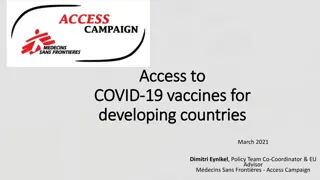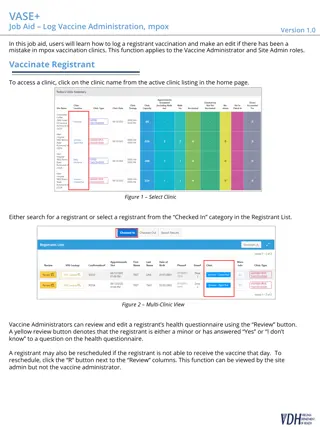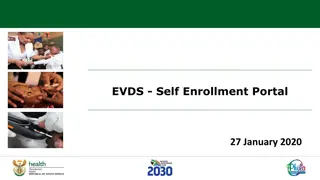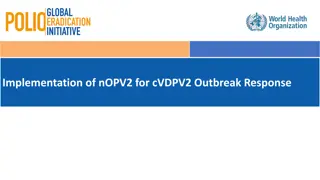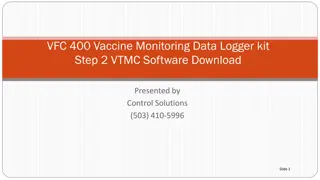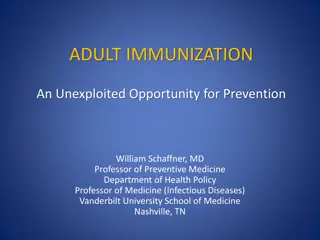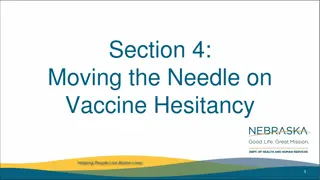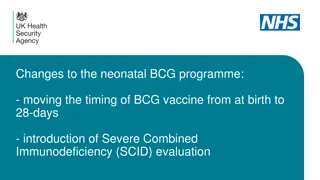Advancements in Tuberculosis Vaccine Development
Explore the importance of developing TB challenge models for vaccine selection, citing challenges such as the long duration and potential toxicity of current treatments. The need for effective vaccines is urgent due to high global TB incidence and mortality rates. Research focuses on human mycobacterial challenge models and the protective effects of BCG vaccination against M. tuberculosis in various animal studies.
Download Presentation

Please find below an Image/Link to download the presentation.
The content on the website is provided AS IS for your information and personal use only. It may not be sold, licensed, or shared on other websites without obtaining consent from the author. Download presentation by click this link. If you encounter any issues during the download, it is possible that the publisher has removed the file from their server.
E N D
Presentation Transcript
Controlled human mycobacterial infection models Helen McShane The Jenner Institute University of Oxford
Why do we need a TB challenge model? Uncertain predictive value of preclinical animal models Lack of validated immune correlate of protection Urgent need for an effective vaccine 10m new cases and 1.5m deaths in 2018 We need tools for vaccine selection BUT TB Rx takes 6 months Drugs can be toxic 5% chance of relapse We can t challenge with the virulent organism!
Some questions How safe does a strain need to be? How long does a strain have to live? How sensitive does a reporter need to be? What kind of vaccines would this work for? Can we detect a vaccine effect? Would this be acceptable to the regulators?
Human mycobacterial challenge models An effective vaccine against BCG should also protect against M. tuberculosis Does intradermal BCG challenge provide a good model for aerosol M. tuberculosis challenge? Validation in preclinical animal models
BCG vaccination protects against intradermal and intranasal BCG challenge in mice Minassian et al, PLoS One 2011
Validating intradermal BCG challenge in cattle BCG-BCG challenge ** * 6 Naive BCG 5 cfu/ml (log10) ** p<0.01; *p<0.05 4 3 2 2 3 Weeks post-challenge Villarreal-Ramos et al, Vaccine 2014
BCG vaccination protects against intradermal BCG challenge in NHPs Harris et al, Tuberculosis 2018
Pilot BCG challenge study BCG (SSI), 2-8 x 105cfu/ 100ul Route i.d Sampling: 4mm punch biopsy Biopsy at 1, 2, or 4 weeks post BCG Minassian A et al, JID 2012
BCG challenge results for BCG and MVA85A vaccination PCR Culture A = na ve B = MVA85A C = BCG D = BCG- MVA85A * ** *** p < 0.05 p < 0.01 p < 0.001 Harris S et al, JID 2013
Comparing yield by strain and dose TB031 Biopsy PCR TB031 CFU (4 weeks) p = <0.0001 120000 120000 p = 0.0001 p = 0.0017 p = <0.0001 100000 p = 0.0008 100000 p = <0.0001 BCG copy no./biopsy p = 0.0003 80000 CFU/biopsy 80000 p = 0.0002 60000 60000 40000 40000 20000 20000 0 0 A B C D A B C D Group Group Group A low dose SSI Group B low dose TICE Group C high dose SSI Group D high dose TICE Minhinnick A et al, JID 2015
Why give aerosol BCG? As a controlled human challenge infection As a more effective route of vaccination As an approach to study the immunobiology of infection in humans
Outcomes in aerosol BCG study 1. Safety and tolerability 2. Can BCG be recoverable from BALF? 3. Th1 immunogenicity in the blood and BALF post aerosol v ID immunisation 4. Exploratory immunology MAITs B cells Antibodies
TB041 Aerosolised BCG in healthy, BCG-na ve, UK adults BCG na ve, healthy UK adults Original plan BCG Danish (SSI) Group A Aerosol BCG 1x103 CFU (n=3) Group B Aerosol BCG 1x104 CFU (n=3) Group C Aerosol BCG 1x105 CFU (n=12) Group D ID BCG 1x105 CFU (n=12) BCG Bulgaria (Intervax) Arm 2 Group 2A - Aerosol BCG 1x104 CFU (n=3) Group 2B - Aerosol BCG 1x105 CFU (n=3) Group 2C - Aerosol BCG 1x106 CFU (n=3) Group 2D Aerosol BCG 1x107 CFU (n=3) Group 2E Aerosol BCG 1x107 CFU (n=9) Group 2F ID BCG 1x105 or 1x106 CFU (n=12)
TB041: Delivering aerosol BCG to healthy BCG-nave subjects BCG (INH or ID) Screen D0 D2 D7 D14 D28 D84 D168 Bronchoscopy PPD ELISpot @ D0, 7, 14, 28, 84, 168 WB ICS @ D0, 14 & 168 BAL ICS / detection of BCG by MGIT/PCR Satti, Marshall et al, unpublished data
TB043: Aerosol BCG to define immunobiology of disease Aerosol BCG to 50 healthy subjects 15 controls 10 BCG and 3 controls receive bronchoscopy at one of the following time points: Days 2, 7, 14, 28, 56
TB043: Delivering aerosol BCG to healthy BCG-nave subjects BCG (INH or ID) Screen D0 D2 D7 D14 D28 D84 D168 D56 Bronchoscopy, BAL and endobronchial biopsies @ D2, D7, D14, D28 or D56 PPD ELISpot @ D0, 7, 14, 28, 84, 168 WB ICS @ D0, 14 & 168 BAL ICS / detection of BCG by MGIT/PCR Single cell RNASeq on BAL cells Satti, Marshall et al, unpublished data
Summary Intradermal BCG challenge can detect a prior BCG vaccine effect in mice, cattle, NHPs and humans Aerosol BCG is well tolerated BCG is recoverable from the BAL fluid after aerosol BCG Further studies needed to assess: if aerosol BCG is safe in historically BCG vaccinated individuals a BCG vaccine effect can be detected in historically BCG vaccinated individuals
Animal models Toxicity Mechanisms Efficacy Human safety & immunogenicity Human field efficacy Human challenge model
Acknowledgements Iman Satti Julia Marshall Rachel Tanner Stephanie Harris Lisa Stockdale Matt O Shea Magali Matsumiya Zita Manjaly-Thomas Sharon Sheehan Ian Poulton Raquel Ramon-Lopez Alison Lawrie Alice Minhinnick Paulo Bettencourt Morven Wilkie Sam Vermaak Elena Stylianou Ilaria Pepponi Lynda Stewart Anne Kasmar Willem Hanekom Oxford Centre for Respiratory Medicine Henry Bettinson Bernardo Villarreal Ramos Martin Vordermeier Glyn Hewinson Sally Sharpe Andrew White Ann Williams Study participants



